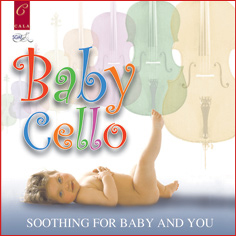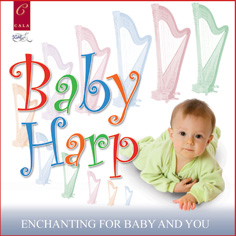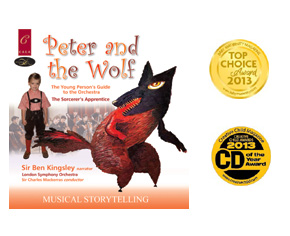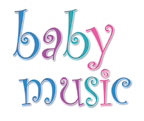
 |
A Sound Start in Life
"We have professionally selected a range of the best music now available for children, while developing our own award-winning
Unique Baby Music Formula for soothing and enchanting mother and baby."
Artistic Director
 |  |
 |  |
"The music is beautiful! The richness of it is wonderfully soothing for my baby."
iParenting Media Awards
"One of the most relaxing CDs we have ever had the pleasure of experiencing."
Practical Pre-School Gold
 We work withArts Global"Helping Young Musicians"artsglobal.org Shop Here!
We work withArts Global"Helping Young Musicians"artsglobal.org Shop Here!PayPal plus all major
Credit and Debit cards
—Secured by SECPay— Postage of £3.50 added
at checkout to an
order of any size
Information about the benefits of good music heard throughout pregnancy, early life and into adulthood. Pointers to fine participatory music programmes for young people. | |
CHOOSING AN INSTRUMENT FOR YOUR CHILD
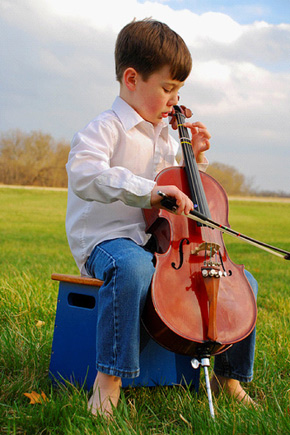 | Click here to download a PDF version of this article Choosing FOR vs choosing WITH your child Choosing an instrument for a child is the beginning of a musical journey of discovery for them. Some children may only learn for a few years before giving up, but for others it will become a lifelong hobby and source of enjoyment, and for a few it will go on to become their profession and livelihood. It’s no surprise then, that making a decision about the most suitable instrument for your child is among the most important you’ll make for them: a good match could potentially shape the direction of your child’s life, but making the wrong choice at this early stage could affect their confidence and their feelings towards music. It may even cause them to give up, thinking they’re no good, when if a different instrument had been chosen, it could have been a different story. |
There are a number of factors that will influence the decision as to which instrument is selected, and, taking the child’s opinions out of the equation for the moment, often the instrument is chosen due to circumstance and practicality. One of the first considerations to be made is financial: how much does the instrument cost to buy or hire? Does the child’s school offer lessons or will you need to find a private teacher? Is there a good selection of sheet music available for that instrument? Is the instrument more specialist (and therefore more expensive)? This could well be the primary influencing factor in choosing an instrument: many families simply cannot afford to shell out £1,500 or so for a beginner’s oboe, plus weekly private instrumental lessons. Even for those who can afford it, is it really wise to make such a large investment so early on in a child’s musical education, when they may change their mind about playing it? The good news is that schools and music shops often run rental schemes for higher-value instruments, so that the initial outlay isn’t so daunting; it’s well worth looking around to see if this is an option before writing off an instrument purely for that reason. Another very practical aspect to consider is the size and portability of the instrument. Will your child realistically be able to walk to school with a cello? Do you have room in your home for a piano or full-size keyboard for them to practice on? There will likely be a solution to most issues you come across on this front—perhaps they could have a lift to school on the day of their instrumental lesson, or arrange to practice on a school piano during their lunchbreak—but nevertheless it is worth keeping in mind. The size of the instrument will also have a bearing when you take into account the physical characteristics of your child. They will need to be old enough and strong enough, for example, to hold a tuba in the correct position, have arms long enough to reach the full stretch of a trombone’s slide, or to handle a viola. This might mean that they start learning a different instrument until they have developed enough physically to progress to a larger one. An important consideration, but one which is sometimes overlooked, is the future of the child’s playing career. If all goes well, and they enjoy their music lessons, work hard and find that they have a real talent for their instrument, music will hopefully become a source of lifelong enjoyment for them. Whether it remains something they do in their spare time—such as joining a youth orchestra or forming a pop group with their friends—or whether they decide to go on and study music at university, play with a professional ensemble, or even become a concert soloist, once they have discovered a love of music, and the satisfaction of making music with other people, it will always be with them. Obviously, that is all far in the future, but there are things you can do, even at this early stage, that will make life easier for your child should they chose to pursue music either as a hobby or as a career. Although this not a primary consideration, playing an instrument that is slightly less popular could mean that they’ll be more in demand if they become good at it: it may be easier to win a place in a youth orchestra, or school ensemble. Conversely, you may find it harder to find a teacher. University music departments are inundated with pianists, violinists and flautists, but they see very few violists, bassoonists or harpists, for example. One consideration that will either be a help or a hindrance to your decision-making process is whether you are musical yourself, or if you learned an instrument as a child. If you played the flute when you were younger, for example, and have happy memories of that, it is natural to hope that your child will gain the same pleasure from it, and decide that the flute will be their instrument. If you own a flute already that they can use it’s even more likely that you’ll make this decision, and in some cases it may be right, and the child will be suited to this instrument and follow in your footsteps. In other cases, however, it may be entirely unsuitable, and your child may resent not having been given the opportunity to be involved in the decision. They are their own person, and decisions made for sentimental reasons are not always rational. By all means, if you have a flute or guitar or other instrument around the house, let your child experiment with making a sound, under your supervision, and if they have a genuine enthusiasm for it, then that becomes a valid reason for choosing it for them. Choosing FOR vs choosing WITH your child I’d like to note an important distinction between choosing an instrument for your child, (which is what this article has been about, thus far), and helping your child to choose an instrument. The former suggests rational discussion and thought, involving a list of pros and cons and perhaps even a spreadsheet. The latter, helping your child to make a decision once they are old enough to have an input is, in my opinion, of equal importance, but realistically, likely to be influenced by quite different factors: what their friends play, what their favourite celebrities or popstars play, what seems to involve the least amount of effort, or even the fact that wind band clashes with football practice, or choosing guitar means they conveniently miss their maths class on a Wednesday! The point I’d like to make is that if a child doesn’t want to do something, they won’t enjoy it, they won’t progress, and they will feel justified in saying they didn’t want to because they won’t be very good at it. Seeking your child’s opinion and finding an instrument that they can get enthusiastic about, look forward to practising and aspire to be good at, is the key to making sure that they enjoy their lessons and want to continue learning. In order to come to a decision with your child that you are both happy with, you could talk together about the different musical instruments and do some listening activies. Some Music Schools offer open days where children can have a go at a variety of instruments and see which they like the most. Informationon how to find services and events like this will be the subject of a future article. If this isn’t possible, your local music shop should be happy to show you a selection of instruments and let your child hold them, and try to make a sound. Listen to music together and talk about what instruments you can hear (Prokofiev’s Peter and the Wolf is excellent for this activity), and try to attend some concerts, either professional performances, local youth orchestra or music society concerts, or student recitals at a school, so that your child can see and hear musical instruments in action. Once the decision about the instrument has been made, it’s time to find a teacher and book a trial lesson. Even if your child is old enough to attend the lesson alone, you’ll probably want to go with them for the first few times at least, to make sure you’re all happy with the arrangement. Don’t be afraid to try other teachers if you’re not keen on the teaching style. Chemistry between a teacher and a pupil is crucial: we remember from our own childhood how a good teacher could stimulate and inspire, but a bad teacher could turn us away from their subject altogether. Finding a good teacher is not always as easy as it might seem, but once you have the right instrument and the right teacher combined your child will get the best possible start. Finding a teacher will be the subject of a forthcoming article in “Music In Our Lives”. Some teachers offer group lessons for beginner players, particularly younger pupils, and this can be an excellent introduction to playing. Children are encouraged to play as part of a group, and gain confidence before being expected to play alone. There are several well-known methods of learning music which involve group playing for beginners. In the Suzuki Method, children learn by observing others playing as much as playing themselves, and written music is not introduced until the student is able to play quite well from memory. The Kodály method takes an approach to music education based on teaching, learning and understanding music through the experience of singing, giving direct access to the world of music without the technical problems involved with the use of an instrument. Carl Orff was the founder of the Orff-Schulwerk method of learning, which combines traditional music teaching, notably using percussion instruments, with movement, dance, drama and language. More information on each of these methods can be found by following the links in the “Further Reading” section. Instrument personalities and stereotypes Much has been written about people with particular personality characteristics being suited to certain instruments. A lot of this can be put down to light-hearted stereotyping, and should not be treated as entirely accurate! For example, a commonly-held view about flute players is that they are girly girls. But there are plenty of successful male flautists, so boys shouldn’t be discouraged from taking up this instrument. Another stereotype is that brass instruments are for noisy or naughty children. They are the “hooligans of the orchestra”, who sit at the back making jokes. While being very amusing, generalisations such as these can be quite damaging for children who would like to play a particular instrument, but are put off by what their choice might imply about them as a person. Having said that, there is an element of reason behind linking certain personality types with particular instruments, due to the kind of sound the instrument produces, its placement within an orchestra, and the kind of work required to become a good player. A shy and timid person, for example, may not enjoy playing the saxophone, or another instrument which is often used for solos and stands out from the overall ensemble sound. They may have more success playing the flute, or the violin, where they can be amongst a number of other people playing the same part. It is worth taking the time to find out about the kind of personality-types which would suit the instruments you are considering. Although a lot of it is common sense, there are some interesting articles referenced in the “Futher Reading” section, which will provide more information. We hope that this article, and those referenced, will help you and your child to make an informed choice of instrument. Once your child has started to play, a wonderful world of adventure and opportunity will open up for them. Music is a social art, and playing with others, and for others, can be one of the most positive and rewarding experiences in a child’s life. Further articles on “Music In Our Lives” will discuss the possibilities of concerts, auditions, the UK music exam systems and the surprisingly large network of competitions. All of these are experiences your child may come across within the first few years of playing, and can be inspiring and motivational when approached with the right mindset. Before deciding which instruments should be tried with a view to taking up, it’s sensible to get them used to listening to a variety of instruments first, so that they are familiar with the different sounds and musical timbres. At babymusic.com, we believe that listening to music and participating in music-making are both extremely worthwhile activities. Why not inspire your child to take up an instrument or renew their enthusiasm by listening together to some of our fabulous recordings? Peter and the Wolf and The Young Person’s Guide to the Orchestra are particularly suitable for a child beginning to think about taking up an instrument, but it’s also good for them to listen to instruments in all contexts, to get an idea about the kind of music that’s available, a typical playing style and where they fit in an orchestra or ensemble. Baby Cello and Baby Harp are just two of our own recordings which provide excellent examples of these instruments playing music which may already be familiar to your child. A summary of some common instruments you and your child may chose, with points to consider: Piano/Keyboard 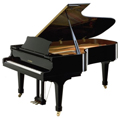 The piano is among the most versatile of instruments, and pretty much any kind of music can be played on it. Many people have a piano in their house already, or can accommodate a keyboard at least, so that their child can practice at home. Some children may never venture out of the home to play, but infinite opportunities exist in local communities to perform as a soloist, accompanist and in chamber music groups of all shapes, sizes and styles. Most of the time, learning the piano is a solitary pastime, however there is a lot of good material available for playing duets with others, and once a child reaches a reasonable standard they are able to start accompanying their friends or siblings who play other instruments. The piano is quite difficult to play well, as it involves reading a lot of notes across a double stave, but with practice this becomes more and more natural. A top-of-the-range piano can be immensely expensive to buy, as much as £30,000 but as long as a child has the opportunity to play on a ‘proper’ piano regularly, there is no harm in them practising at home on an affordable piano or a full size electronic keyboard with weighted keys. Many people chose to learn piano alongside another instrument. String Family Violin 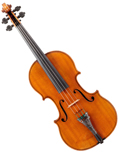 The violin is known for being one of the most difficult instruments to play well, but is also one of the most popular for beginners. It is available in different sizes: full size, 3/4, 1/2, 1/4 to 1/8 and even smaller, so it is possible for very young children to learn to play. Progress may be slow at first, and the initial sound produced is invariably not particularly pleasant, but with practice and in time a well played violin makes a truly beautiful sound. Modern violin cases are light and very protective, so the instrument is easy to transport. Beginner violins are relatively inexpensive, from around £100, and can even come in a choice of colours! Once your child gets a bit more advanced you’ll probably want to invest in a higher-quality instrument though. The instrument itself is quite delicate and may need repairing and strings replacing from time to time. The violin is one of the primary orchestral instruments, and most orchestras can accommodate large numbers of players, so there are great opportunities for group music-making. The stunning sound of 48 violins can be heard on The London Violin Sound CD. Viola  The viola is similar to the violin in terms of financial and practical considerations, but is a less commonly chosen instrument, perhaps due to its larger size, or its role in the middle register of the string section, where it gets fewer ‘big tunes’ to play. This means that it will be harder to find a teacher, but a good player will be in more demand from orchestras and ensembles. Another point to consider is that violists use a different musical clef, the alto clef. For beginners who have never read music before this won’t be a problem, they will simply learn that clef first. For those who have a little musical experience it may be confusing initially, but it shouldn’t take long to get used to. The rich sound of 48 violas can be heard on The London Viola Sound CD. Cello 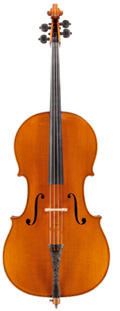 Many people are of the opinion that the cello is the most beautiful-sounding of instruments, and it has become a popular choice as a first instrument for children. Cellos are available in a variety of sizes, from full size to 3/4 and 1/2 to 1/4 and even smaller, so it is possible for children as young as 3 or 4 to begin lessons. Cellos are more expensive to buy than violins, and you should expect to pay around £350 for a starter instrument. They are obviously larger and heavier, so thought should be given to how it will be transported, if the child usually walks to school, for example. The large size of the cello also makes it more vulnerable to accidental damage from being knocked, and repairs can be expensive. The more natural playing position can make it easier for children to begin the cello than the violin. There are excellent opportunities for group playing in orchestras and string ensembles, and there is a good selection of music available for young cellists. Cellos play music written in the bass and tenor clefs. A lovely example of the sound of many cellos can be heard in our own Baby Cello CD, and they can be seen in action too, in our classical and popular video excerpts. Double Bass  The double bass is a very uncommon choice for children just taking up an instrument for the first time, but it doesn’t need to be. It is relatively easy to begin learning: the hindrance is mainly in the size, and the ability to find a teacher. It is available in smaller sizes for beginners, and the difficulties in transporting it can be worked around by supportive parents—it is actually possible to fit a full size double bass into a classic Mini car! Basses tend to be very robust and not easily damaged, although strings will need replacing from time to time. Remember too, that many double bassists derive great pleasure (and popularity) from playing in jazz groups and ensembles. A great demonstration of what 8 double basses can do can be heard on The London Double Bass Sound CD. Harp  The harp is one of the most ancient instruments, but also one of the least often played, these days at least. This is likely to be primarily due to the size and cost of the instrument. A folk harp is relatively small, just under 4’ and weighs about 30lbs. A classical concert harp is, however, much larger and heavier, around 6’ high and as much as 110lbs. An estate car or small van is needed to transport a concert harp, and the instrument will cost from £5,000 upwards. If your child would like to learn to play the harp, it is helpful for them to start by having piano lessons; this will get them used to reading music set on a double stave, and give them some understanding of music theory. It can be difficult to find a harp teacher and you may need to travel for lessons. Orchestras tend to only have one or two harps, and these are not needed all of the time, but there are nevertheless plenty of opportunities to be found playing with other ensembles, or as a soloist or an accompanist, not least at weddings and cocktail parties! All caveats aside, the harp is one of the most beautiful-sounding instruments and one of the most rewarding to play. The magnificence of 16 harps can be heard on The London Harp Sound CD. Guitar 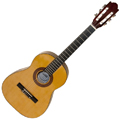 This is a very popular instrument choice, and is now taught in group lessons in schools as well as in individual lessons. You and your child will need to decide what style of guitar they want to play: folk, classical or pop/rock. A popular style of playing is a favourite with children because it is easy to learn the chord shapes and then they’re able to strum and sing along with their favourite songs quite quickly. Try and encourage them to also learn to read music and practice some classical technique as well though, as this will be useful to them in the future. A good teacher will encourage a balance between style, theory and technique, and the ‘fun’ elements of playing. A beginner’s acoustic guitar can be bought for around £40, and there is a wide selection of music available. Classical guitar is quite difficult to play, and progress can be slow, but with perseverance it is a beautiful sound. The versatility of the guitar and the variety of group playing opportunities make this an excellent first instrument for children, for all that the guitar is not a part of the orchestra. Woodwind Family Recorder  The recorder is commonly used as a “starter instrument” in schools as it is cheap to buy, and simple to play. Children are often taught recorder in group classes before progressing to other instruments. It is a serious instrument in its own right, though, and there are professional players who demonstrate its full solo capabilities. It is small, light and easily transportable. There are several differently-sized instruments in the recorder family, and those who go on to study recorder at a higher level will learn them all. As a starter instrument, plastic recorders are very cheap and easily available. Higher-quality, wooden recorders can be more expensive but still are a relatively low-cost instrument choice. Beginner recorder classes are common in schools, and there are lots of opportunities for group playing. Beyond that, the recorder is not an orchestral instrument, so many of the more advanced players tend to move on to other instruments. Flute / Piccolo  Children who have learned the recorder at school often go on to study the flute as the fingerings are similar. Teachers are easy to find, and children’s wind ensembles will cater for large numbers of young flautists. Flutes are lightweight to carry, and come in three sections which are easily assembled. A flute should be thoroughly cleaned after every use to keep it in good condition. A starter flute can be bought quite cheaply, but once it’s clear that flute is the instrument of choice you should consider paying a bit more, upwards of £200, for a quality instrument. As this is a popular instrument for children, competition is quite fierce at a higher level, as a typical orchestra only contains two or three flutes. There is plenty of music available for soloists and ensemble players. Traditionally this is an instrument favoured by girls, though some boys do choose to play. Oboe  The oboe is one of the most difficult instruments to play, and before the age of around 12 it is very hard to form the correct mouth-shape (embouchure), so children don’t tend to start before they are at secondary school. An oboe is easy to assemble and is lightweight to carry. It should be cleaned after every use to keep it in good condition. Even a beginner oboe is expensive, and you should expect to pay around £900 for a reasonable quality instrument. Repairs and maintenance can also be expensive. Reeds are fragile and easily damaged, but if care is taken can last for several months. This is not a common choice of instrument, so good players will be in high demand for orchestras and ensembles. Children will need to be determined, prepared to work hard and not be put off by the time and work involved to achieve a nice sound. Bassoon The bassoon is the largest instrument in the woodwind family apart from the rarely-used contra-bassoon. To play the bassoon a child’s hands need to be large enough to reach the keys, so most children don’t start until the age of around 12. It is also heavy to hold when playing, and is supported by a strap worn around the neck. Although large, the bassoon is no harder to learn than other woodwind instruments, apart from the initial physical requirements. It comes apart into several pieces, and a case is about three feet long, so fairly easy to carry. A student bassoon will be very expensive to buy—in the region of £3,000—however some music shops may offer instrument rental schemes which can help with this. The bassoon is principally an orchestral instrument, but is also used in wind bands. Once again, it is not a commonly-chosen instrument, so although places in orchestras are limited, a good player will be in demand! Clarinet  Like the flute, children who have played the recorder at school find that going on to study the clarinet is a straightforward transition. Many clarinettists also play the saxophone as there are similarities there too. The clarinet is a popular choice for children, and children’s wind ensembles will cater for large numbers of young clarinettists. This instrument is extremely portable, and easy to assemble, although care needs to be taken with the reeds, which are quite delicate. A reasonable quality student clarinet should cost in the region of £300. With so many keys and levers clarinets can be expensive to repair, and pads need to be replaced every few years. Reeds are inexpensive and can last several months. As this is such a popular instrument choice, competition for places in ensembles is quite fierce at a higher level. Saxophone  The saxophone is quite an easy instrument to pick up, although children will need to have strong enough hands and arms to be able to hold it up, and need to be able to form the correct mouth-shape (embouchure), so children don’t tend to start before they are at secondary school. Because of the similar fingering patterns, it is relatively easy to transition to saxophone from the recorder, flute or clarinet. Most beginners learn the alto saxophone, though will probably go on to play the other sizes too—soprano, tenor and baritone—once they become more advanced. A good student saxophone can be bought for around £300. You can pay less, but they may not be very good quality. Pads will need to be replaced every few years at around £50-£60, and reeds can last for a couple of months. The saxophone is a very versatile instrument so there will be lots of opportunities for group playing in wind bands, jazz bands and even pop groups. It is only occasionally used in orchestral music so a saxophonist would be unlikely to find work as a permanent member of a professional orchestra, but would be called in as and when required. Children who are outgoing and sociable will probably enjoy the saxophone. They might have a flair for improvising and enjoy putting a lot of expression and character into their playing. Brass Family Trumpet 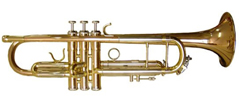 The trumpet is a popular instrument with beginners, and isn’t too difficult to start learning. You should expect to pay around £200 for a reasonable-quality starter instrument. Trumpets don’t involve any assembly and come in a rigid case, so are easily transportable. They are able to play with orchestras, wind bands, brass bands, jazz bands and even pop groups, so there is plenty of playing opportunity and great variety. The trumpet family, from basses to piccolos, can be heard on The London Trumpet Sound CD. Trombone  The trombone is similar to the trumpet in the method of sound production, but there is a great shortage of good trombone players at universities and music colleges. Most children don’t begin until they are around 11 or 12 because their arms need to be long enough to push the slide out to its furthest positions. Other than that, it is not toodifficult to begin learning. The trombone is an important instrument in a variety of bands and ensembles, and given its relative scarcity, it offers great chances to be popular! Trombones are slightly more expensive than trumpets, but require little maintenance. They can be heavy for younger children to carry around, so bear transportation in mind if you chose this instrument. It can be difficult to find a teacher, but worth persevering or travelling for lessons. The richness and power of 16 trombones can be heard on The London Trombone Sound CD. Tuba  The tuba is easy to produce a sound on right from the very beginning, so is a good starter instrument once children are big enough to hold it correctly, around age 11 or 12. The main drawback is the cost, upwards of £1500 for a reasonable-quality instrument, although it may be possible to rent one in the early stages, or even borrow one from school, so don’t rule it out entirely. It’s not a commonly-chosen instrument, so good players are in demand! French Horn  The horn is not an easy instrument to start: the amount of “puff” needed is considerable and other aspects of technique make it quite difficult to master. Having said that, there is a shortage of horn players, so a child who shows an interest in this instrument, or wants to move on to it from another, should be encouraged, as they will be popular in future if they become a good player! The range and versatility of the French horn, and its expressive capacity, makes it a most rewarding instrument in the hands of a proficient player. An exciting demonstration of French horn playing can be heard on The London Horn Sound CD. Percussion Family Drum Kit  A typical drum kit will consist of bass drum, snare drum, tom-toms and cymbals. It is easy to pick up a simple beat and with experience and improved coordination more complex rhythms and patterns can be played. Drums are a staple for many types of musical ensemble, and players do need to be able to read and understand music theory. There are lots of group playing opportunities available, and you child may even like to form their own band with friends. They will need a teacher, and you will need to make sure that they are suitable, teaching the theory and picking up on bad habits that need to be corrected. A drum kit is large and can be expensive, so it’s advisable to start small and build on it over time. There are a number of starter packages available, or you could even look into a second-hand kit. Percussion An orchestral percussionist needs to be skilled in playing a variety of instruments, from exotic tuned percussion such as glockenspiel, xylophone, marimba and vibraphone to the more basic instruments such as timpani (kettle drums), side drum, bass drum, cymbal and triangle. Players will need to be quick and accurate, yet also be prepared to count and concentrate for large blocks of ‘rests’ between their playing. Most children will play some form of percussion instrument in their class music lessons at school, even if it’s just playing a rhythm on a woodblock or shaking a tamborine. Websites: Although it looks fairly basic, this comprehensive website contains a plethora of information to help you come to a decision, including the financial implications and practicalities of the main orchestral instruments, and advice on how to find a good teacher. The British Kodály Academy is a registered charity working to promote the advancement of British music education, following the teachings of the composer and educator Zoltán Kodály. This website is for teachers, parents and children following the Suzuki method of music education is based on the philosophy and teaching methods developed by the Japanese violinist, pedagogue, educator and humanitarian, Dr. Shinichi Suzuki. A website devoted to the life and work of Carl Orff, composer, educationalist and creator of the Orff-Schulwerk, an educational concept for elemental education in music. Online Articles: This page is based on the ideas covered in a book by Atarah Ben-Tovim and Douglas Boyd (The Right Instrument for Your Child) and has some interesting thoughts on the personality traits of instrumentalists. A Musical Instrument For Every Personality A short piece about the personalities of instrumentalists, and how to choose an instrument based on your child’s other strengths. This piece focuses on certain physical characteristics which may make some instruments unsuitable for some children, or other instruments an ideal match. This article from creativechild.com provides tips and discussion points to help you choose an instrument with your child, emphasising one main point, which is that the child’s opinions and preferences override all other factors. Choosing a Musical Instrument for Your Child: 3 Mistakes to Avoid Simple, but commonly made mistakes are explained here, prompting some extra consideration when choosing an instrument. Choosing a Musical Instrument for Your Child: My Story An article by professional musician Roger Bourland about the instruments he played as a child and how they were chosen. Choosing A Musical Instrument: The Essential Guide For K-12 Students An independent webpage with links to information and resources, grouped by instrument. Choosing an Instrument for a Disabled Player A well-considered piece about the additional complexity involved in playing a musical instrument when you have a disability, and the extra points to take into consideration when choosing an instrument. Help Your Child Pick the Right Musical Instrument A question and answer session with a band leader about the influencing factors around choosing an instrument, and how to help a child decide for themselves. Helping Your Child Choose a Musical Instrument A useful summary of the things you need to consider when choosing which instrument to play. Helping Your Child Choose a Musical Instrument A blog post from a mum in the US about her experiences choosing an instrument with her son. How Learning a Musical Instrument Can Help Your Child Hit the Right Note This piece summarises the benefits of learning a musical instrument, and provides some good links to sites that will help you make the right decision about what your child should play. How to Choose an Instrument for Your Child A good overview of some of the most common ‘starter instruments’ and pros and cons to consider. How To Choose the Best Instrument for Your Child This website provides some useful tips on choosing a musical instrument, and also offers parents the chance to do a personality assessment of their child, which then matches them with the ideal music activities for their personality type. How to Choose the Right Musical Instrument for Your Child A summary of the pros and cons of some commonly chosen instruments. How to Help Your Child Choose a Musical Instrument Simple tips and things to think about when making this decision. How to Help Your Child Choose a Musical Instrument This short piece summarises the reasons why it is good for children to learn an instrument, and gives some tips on how to choose one based on your child’s personality and physical characteristics. How to Help Your Child Choose a Musical Instrument to Study A ‘WikiHow’ article with step-by-step instructions for choosing an instrument and motivating your child, plus some thoughts on specific instruments. How to Pick the Right Musical Instrument for Your Child A summary of some of the factors involved in choosing an instrument, and links to help you decide on what specific model to go for once you have chosen the instrument itself. A discussion on the varying personalities of instruments themselves (not the players). Introducing Your Child to a Musical Instrument A short but helpful guide to getting your child interested and involved in the decisions about instruments. Musical Instruments Children Will Always Want to Play A checklist of points you should bear in mind, but emphasising that the child should enjoy whatever they decide to do, otherwise it is pointless! Personalities of the Orchestra: The String Section A humourous blog post specifically about personalities of string players. Personality Types and Choice of Instrument A debate on the forum site of the Associated Board of the Royal Schools of Music (ABRSM) about personality type and choice of instrument. Quiz: Which Instrument is Right for My Child? A useful quiz with some multiple choice questions to help you match your child with a suitable instrument based on their personality and other preferences. The Social Politics of Picking the Right Instrument for Your Child A highly amusing article by East Dulwich-based journalist, Marianne Kavanagh, originally published in the Telegraph. Tips to Choose the Right Instrument for your Child An excellent article from author, musician and presenter Ruth Bonetti with all sorts of practical and physical considerations which might otherwise have been overlooked. Top Ten Musical Instruments for Beginners As the title suggests, this page summarises the pros and cons of ten popular instruments that children learn. When should I Start My Child on a Musical instrument? A blog post from a mother about when and how to choose an instrument, after a conversation with a professional musician. Your Child and Music – is it Time to Learn an Instrument? This article, from supernanny.co.uk answers some of the frequently asked questions about music and children, such as when the best age to begin learning is, and how to keep children motivated. Periodicals: These are highly technical academic articles, but may be of interest to those wanting very in-depth information. Personality Differences among Musical Instrumentalists An academic article from the journal Psychology of Music, focusing on whether some personality characteristics predispose individuals to pursue certain instrumental performance studies, or reflect habitual performance on different types of musical instrument. Student Personality and Instrumental Participation, Continuation, and Choice The results of a study in which a personality test was administered to secondary school students to determine whether particular personality types are more likely to take up an instrument, and to continue playing. Also whether certain personality types are more likely to choose particular instruments. |







